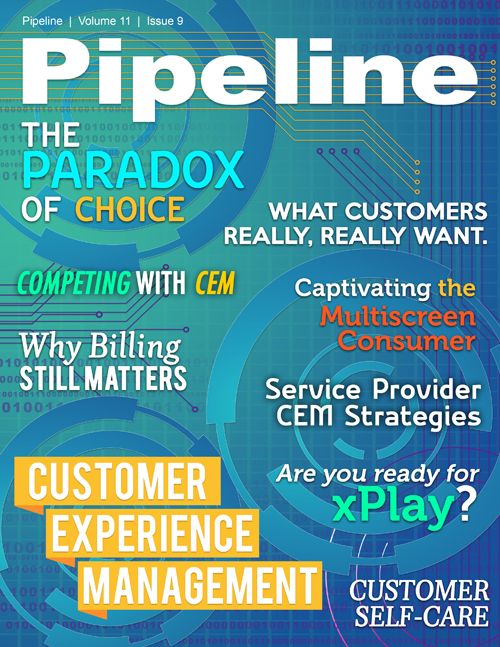Captivating the Multiscreen Consumer
The next step in enhancing the customer’s engagement is to bring potentially competing activities back into the fold. Service providers hold the ‘aggregation’ capabilities, bringing together vast libraries of content, across devices, ensuring regardless of how a consumer watches (catch-up, on demand, live) that the service supports all device options. As the viewer watches content in other locations and on other devices, the service provider should enable them to pause, share and comment on that content. The customer should be able to transport, or “fling” that content from one device to another. The service provider’s customer experience platform, therefore, must understand and manage a growing assortment of video-enabled devices, operating systems, and desired consumer experiences.
2. Programmer-facing capabilities
Content producers aren’t idly sitting by, waiting for the service providers to get it right. They are increasingly able to deliver their content directly to the customer, and increasingly in paid models. Producing some of the most compelling content, programmers like HBO, Showtime, CBS, Sony Entertainment, and most recently ESPN, have all announced plans to launch direct–to consumer-subscription models in 2015. The immediate result of this development is consumer disentanglement: consumers are no longer tied to their traditional provider as the source of that content.
And the impetus to break free from the larger TV bundle and move into smaller individual bundles will only increase; for example, the growing consumer interest in a la carte options for viewing a specific show, or a single episode of a show. Customers will want numerous options for paying for those episodes, shows or bundles, including drawing upon prepaid accounts or gifts from friends or family members, paying with PayPal or loyalty points, or potentially any other channel with a billing relationship.
As a result, the service provider will need to develop and launch more personalized and targeted bundles to retain their subscribers. Understanding customer preferences, both for television content and for other activity across devices, will be key. Making recommendations, based upon user preferences, historical activity and “here’s what your friends liked,” will enhance the user experience. Aggregating the customer’s content across multiple repositories, making the user’s life easier by providing a single platform from which to manage personal content for every member of the household, will be perceived as a huge value-add and increase user engagement. Supporting a customer wallet with myriad payment and billing options is equally critical. And a user-friendly interface for digital commerce, consistent across any device, will remove customer friction when browsing, ordering, paying for and viewing the content wherever and whenever the customer chooses.
3. Partner-facing capabilities
Beyond programmers, the other significant player in the video distributor’s network has always been the advertiser. But the role of advertisers in the new world of video will change as well.
Advertisers, increasingly frustrated with their lack of information about consumer habits in the multi-device world, are looking for alternatives to the ad-funded broadcast TV model. One course of action is to bypass the distributors. Many of the leading marketers are building their own direct-to-consumer engagement platforms, going where the eyeballs are, in order to better understand their customer preferences. To remain relevant in this world, distributors must be able to provide better data to advertisers and other partners about customer behaviors.
The distributor’s differentiator to partners, programmers, advertisers and others, is the ability to capture and share information that goes beyond a particular show, network or brand. As the primary channel for all online behavior...through the television, the mobile device, and the internet...and by personalizing the content to the consumer, the service provider becomes the most relevant player at the center of the future digital video and entertainment value chain.
Going to the cloud
To accelerate the return on investment in network evolution and business model change, the speed-to-market and quality of new delivery platforms is critical. Disruptive business models must not disrupt existing systems and operations. Instead they must complement existing revenue streams, overlaying and touching existing systems only where needed. A cloud-based, managed service approach to digital monetization platforms delivers a competitive advantage through fast-time to market and flexible service evolution with minimal investment, risk, and disruption to operations.
The multiscreen world is here and, if the forecasts are correct, the consumer demand for video content will only continue to grow exponentially over time. Meeting the demand means delivering video content not only on whatever device the consumer chooses, but across multiple screens in a compelling, inter-related experience. Service providers that can deliver video content in an easy-to-use, personalized and consistent fashion, will remain the provider of choice for that captivating, multi-screen experience.



















